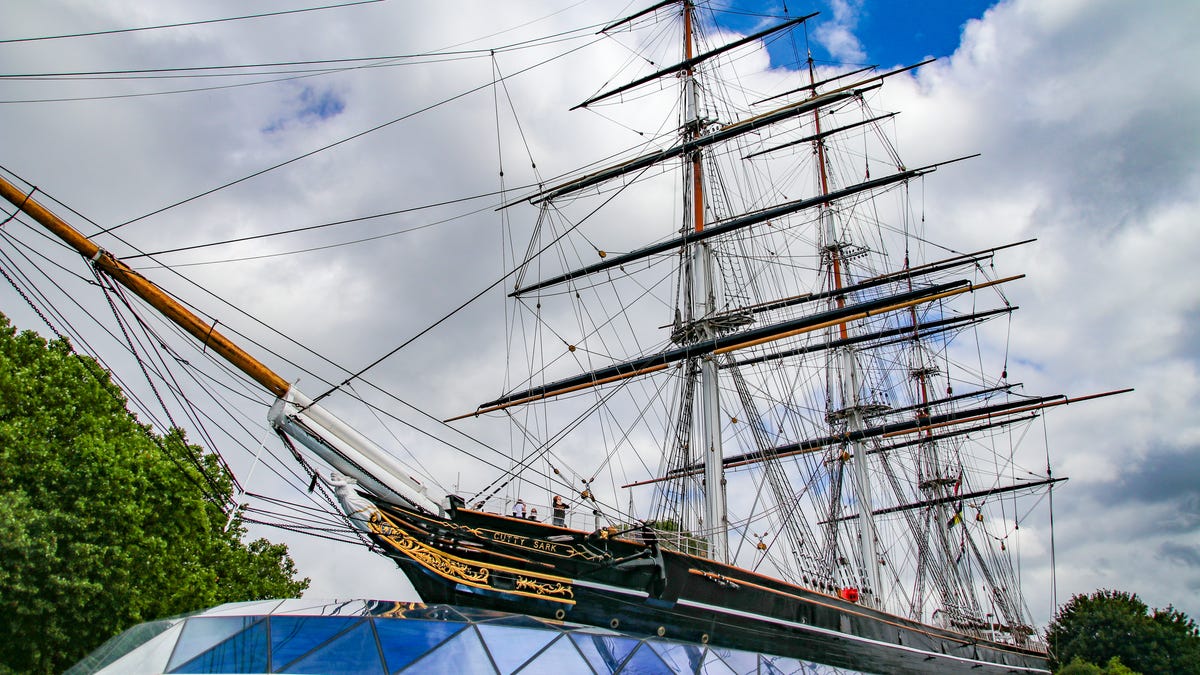 Why You Can Trust CNET
Why You Can Trust CNET Cutty Sark: A tour of 147 years of sailing history
After sailing cargo and crew around the world for 85 years, the Cutty Sark now sits quietly as a museum ship in London. Here's what one of the only remaining clipper ships looks like up close and inside.

It was the end of the era of sails. It was the beginning of the era of steam. The clipper ship Cutty Sark was one of the fastest of her kind, swiftly moving cargo from one side of the world to the other. But her days as the fastest ship on the seas was already numbered.
After 85 years of service, she was finally retired and moved to a drydock in Greenwich, just down the Thames from the city of London. After several extensive restorations, she now hangs suspended above her berth, letting visitors tour her several decks, and even walk along beneath her keel.
An artifact of another time, the Cutty Sarkis an immaculate example of the Age of Sail. She looks as if she was just built and is ready to take on cargo.
Instead, she takes on visitors, who traverse her decks and experience a taste of what life was like on the high seas of the mid 1800's and beyond.
Here's how she looks up close and on deck.
Built in 1869, the Cutty Sark was designed from the start to be a fast tea clipper, moving the makings of Britain's favorite beverage from China to London as quickly as possible. Long and narrow, with 32,000 square feet of sail, she was capable of upwards of 20 mph (32 kph/17 knots) .
Already, though, her days in the tea trade were numbered. The new Suez Canal meant steam ships could make the journey to China and back even faster. So the Cutty Sarktook on other cargo routes, like moving wool from Australia to England. Her speed records in that trip held for 10 years, even against newer, more modern vessels.
As steam overtook wind as the preferred means of propulsion, the Cutty Sarkmoved from owner to owner, taking on various roles and slower, less lucrative routes. Most vessels faced with such a fate often end up scrapped, but she was saved by a wealthy patron for use as a training ship.
She'd continue as a training vessel until the 1950s, when she'd make her last voyage to her current and likely final resting place: a purpose-built drydock in Greenwich, down the river from central London.
Today the Cutty Sarkis suspended over its drydock, floating in air like she once did in the sea. You're able to tour nearly every inch of the ship, each deck, berth, and cabin beautifully restored.
The Cutty Sark is open every day except for the three around Christmas, and adult admission is £13.50. There's a bundle for a bit more that gets you into the famous Greenwich Observatory (where you can stand on the Prime Meridian). It's a great way to spend an afternoon...though as you'll see in the pictures, the weather certainly might have something to say about it.
If London isn't in your travel plans right now, check out the full tour of the Cutty Sark above.
As well as covering audio and display tech, Geoff does photo tours of cool museums and locations around the world, including nuclear submarines, aircraft carriers, medieval castles, epic 10,000-mile road trips and more.
Also check out Budget Travel for Dummies, his travel book, and his bestselling sci-fi novel about city-size submarines. You can follow him on Instagram and YouTube.

